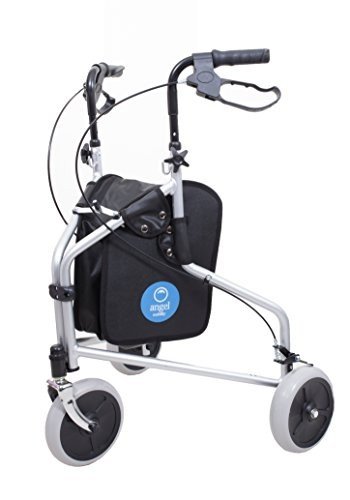Mobility Scooters: A Comprehensive Guide
Mobility scooters have ended up being an important mode of transportation for lots of individuals dealing with mobility challenges. This post checks out the different aspects of mobility scooters, including their types, advantages, functions, and a guide for potential buyers.
Comprehending Mobility Scooters
Mobility scooters are electrically powered devices developed for people with limited mobility. They offer a method of transportation for individuals who might have difficulty walking but still wish to retain their independence. They come in different styles and functions to cater to a vast array of needs.
Types of Mobility Scooters
Mobility scooters can usually be categorized into 3 primary types:
| Type | Description | Best For |
|---|---|---|
| Compact Scooters | These are small and lightweight, ideal for indoors and short trips. | Users with limited storage area or those who take a trip frequently. |
| Mid-size Scooters | A balance in between portability and stability, ideal for both indoor and outdoor usage. | Those who need to cover a range of terrains. |
| Sturdy Scooters | Large and robust, created for rugged outside use and much heavier people. | Users requiring extra weight capability or going off-road. |
Secret Features of Mobility Scooters
The choice of mobility scooter frequently depends upon the functions that align with private needs. Here are a few of the essential features to consider:
- Weight Capacity: Mobility scooters come with various weight limitations. It is crucial to choose a scooter that can sufficiently support the user's weight.
- Variety: The range a scooter can take a trip on a single charge differs. Depending on user needs, one might select scooters with a series of as much as 40 miles.
- Speed: Most mobility scooters can reach speeds in between 4 to 8 miles per hour. Consider what speed is comfortable and safe for the desired environment.
- Turning Radius: A compact turning radius is important for indoor usage, enabling for much easier navigation in tight spaces.
- Battery Type: The type of batteries utilized can affect the scooter's performance. Lead-acid and lithium-ion batteries are the most common.
Advantages of Using Mobility Scooters
The advantages of mobility scooters extend beyond just transport. Some key advantages include:
- Independence: Users can browse their environment without counting on caregivers, promoting self-reliance and self-confidence.
- Health Benefits: Using a scooter can encourage outdoor activity, causing physical and psychological health enhancements by reducing feelings of seclusion.
- Convenience: Scooters can quickly be run in different environments, whether inside your home, in mall, or outdoors.
Essential Considerations When Buying a Mobility Scooter
When buying a mobility scooter, several factors to consider can help ensure that you choose the right model:
Assess Individual Needs:
- Mobility level: Consider just how much support the person will require.
- Variety of use: Determine where the scooter will mainly be used (indoors, outdoors, on rough terrains, and so on).
Test Drive:
- Always test drive several models to discover a suitable fit. Take notice of comfort, ease of steering, and the scooter's responsiveness.
Evaluation Safety Features:
- Look for scooters with appropriate safety functions like lights, indicators, and anti-tip styles.
Inspect Warranty and Service Options:
- A trustworthy warranty and offered service alternatives are essential for long-term use.
FAQs about Mobility Scooters
1. How quick do Santina go?Mobility scooters usually have speeds ranging from 4 to 8 miles per hour, with most developed for security rather than high-speed travel. 2. Exist weight constraints on mobility scooters?Yes, mobility
scooters include specific weight limitations, typically ranging from
250 pounds to over 500 lbs, depending on the model. 3. Can mobility scooters be used indoors?Certain designs, especially compact scooters, are specifically developed for
indoor usage and are easier to maneuver in tight spaces. 4. How typically do the batteries require to be replaced?Battery life can vary based upon use, however usually, with appropriate care, batteries might last in between 1 to 3 years before requiring replacement
. 5. Are mobility scooters covered by insurance?Coverage can differ, but some insurance coverage strategies, including Medicare and Medicaid, might cover part of the expense. It's advised to contact individual insurance suppliers. Mobility scooters serve as a
important tool for lots of individuals, allowing them to maintain
their freedom and independence. By understanding the different types and features of mobility scooters, people can make informed decisions tailored to their specific requirements.
Whether used for errands, socializing, or leisurely activities, mobility scooters can improve the quality of life for those with mobility limitations. Purchasing a mobility scooter is a choice that can significantly impact an individual's life. For that reason, individuals must thoroughly assess their choices and choose a model that best aligns with their way of life and mobility requirements
.

